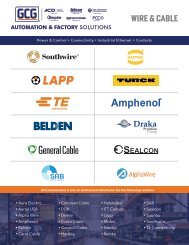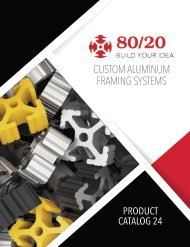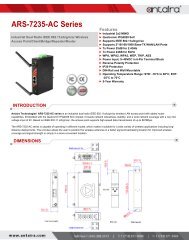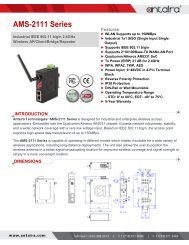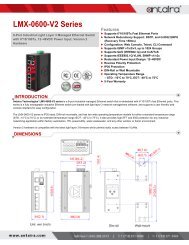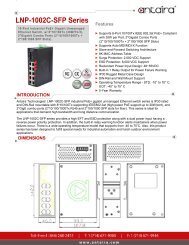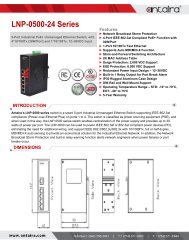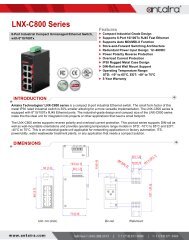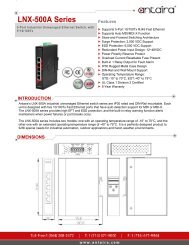IDEM Product CATALOG
IDEM Safety Switches Product Catalog - PCC US Distributor of IDEM
IDEM Safety Switches Product Catalog - PCC US Distributor of IDEM
Create successful ePaper yourself
Turn your PDF publications into a flip-book with our unique Google optimized e-Paper software.
SECTION 22<br />
Python Line Series - Conveyor Belt Alignment Switches<br />
www.idemsafety.com CONVEYOR BELT ALIGNMENT SWITCHES<br />
APPLICATION:<br />
Conveyor Belt Alignment switches are mounted on sections of plant conveyors to protect against excessive belt drift due to an unintentional<br />
movement. They can be fitted at appropriate points along the conveyor length to ensure that should the belt position drift, the roller arm of the switch<br />
will move to a pre-determined position and cause activation of a control circuit.<br />
All switches conform to European Standard IEC 60947-5-1 and provide positively operated contacts at the point of tripping. They can be used to<br />
satisfy the requirements of EN 620 with regard to conveyor control hazards caused by shifting of the belt position during running.<br />
They are available in different roller diameters to provide heavy duty performance and long life.<br />
OPERATION:<br />
The steel roller of the switch is placed near to the running edge of the conveyor belt such that deflection of the roller and arm will cause activation<br />
“tripping” of the internal contacts of the switch. Adjustment of the tripping angles and necessary activation torque is provided by the switch.<br />
INSTALLATION GUIDE:<br />
1. Installation of all switch systems must be in accordance with a risk assessment for the individual application.<br />
Installation must only be carried out by competent personnel and in accordance with these instructions.<br />
2. M5 mounting bolts must be used to fix the switches. Tightening torque for mounting bolts to ensure reliable fixing is 4 Nm.<br />
Tightening torque for the lid screws, conduit entry plugs and cable glands must be 1.5 Nm to ensure IP seal. Only use the correct size gland for<br />
the conduit entry and cable outside diameter.<br />
3. The position of the roller must be chosen to ensure that in normal use the belt does not touch the roller, but that should the belt move beyond its<br />
normal guides it will make contact with the roller. After selecting the correct mounting position, the switching points of the internal contact blocks<br />
can be finely adjusted via internal cams.<br />
There are 2 internal contact blocks one to provide a “STOP” signal the other to provide a “WARNING” signal. The blocks offer NC and NO circuits.<br />
Final Adjustment of contact block action:<br />
WARNING SIGNAL<br />
Contact block 1<br />
Adjustment cam.<br />
Allen screw (2.5mm)<br />
Tightening Torque 2Nm<br />
Factory setting 14 degrees<br />
(Adjustable 10 to 18 degrees)<br />
4. The operational torque can be adjusted to<br />
cope with belt sensitivity or mounting angle.<br />
Factory setting is<br />
low setting<br />
OPTIONS:<br />
Housings:<br />
Die-cast painted yellow, or Stainless Steel 316.<br />
Roller Options:<br />
35 x 120mm Short Roller<br />
35 x 230mm Long Roller<br />
50 x 170mm Medium Roller<br />
MINIATURE BELT ALIGNMENT SWITCHES<br />
Please see P214-215 HLM-CBA Types.<br />
Housings: Die-cast painted red or S/Steel 316.<br />
BLOCK 1 BLOCK 2<br />
STOP SIGNAL<br />
Contact block 2<br />
Adjustment cam.<br />
Allen screw (2.5mm)<br />
Tightening Torque 2Nm<br />
Factory setting 25 degrees.<br />
(Adjustable 15 to 35 degrees)<br />
Operational torque can be<br />
increased or decreased by<br />
turning the adjustment<br />
screw.<br />
208



